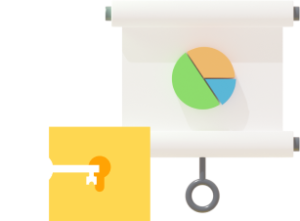Try our learning platform free with a 7 day trial
and see if your child likes it.
Number bonds made easy
What are number bonds?
If your child just started learning Singapore Math in Primary 1 this year, you would have probably heard the term “number bond” and wonder what it is.
Simply put, number bonds refer to the relationship between numbers.
Children are taught to see numbers in terms of parts and whole. When we put smaller numbers together to form a greater one, we are putting parts together to form a whole. On the contrary, when we split a number into smaller numbers, we are breaking up the whole into parts.
Why are number bonds important?
Number bonds form the foundation of basic arithmetic. The more familiar your child is with their number bonds, the better their number sense and the faster they can calculate when they need to add, subtract, multiply or divide them.
On top of that, number bonds can also help your child understand the “part-whole” concept when they learn about the bar model drawing problem-solving technique.
That is why they are an essential part of the Singapore primary school math curriculum in Primary 1.
Check out this Practicle Math video that explains more about number bonds.
How should you teach number bonds to your Primary 1 child?
The best way to introduce number bonds to your child when they are in Primary 1 is to use the concrete pictorial abstract (CPA) approach, just like how they learn it in school. Let’s walk you through each step and make it simple for you.
During the concrete phase:
Imagine that your goal is to teach your child the number bond of 5. To do that, you can prepare 5 small items for your child to play with. Some suggestions include items like straws, toothpicks, counters or other convenient items that you can find at home.
Start by counting the number of items together and then get your child to put the items into 2 groups.
Some of the possible combination your child might put the items can be 1 and 4, 3 and 2 or 0 and 5. Encourage them to explore all the different ways of splitting 5 up and then help them see how the numbers in each group make up the number 5 when they are put together. As they are doing it, get them to describe what they see, for example, “1 and 4 make 5” or “3 and 2 make 5”.
At the end of the exercise, your child should be able to see the relationship between the parts and the whole.
Number of items in group 1 (part) + Number of items in group 2 (part) = Total of 5 items (whole)
Once your child has the hands-on experience of breaking up the number 5 and moving its parts around, it’s time to move on to the next phase where they learn with pictures.
During the pictorial phase:
Teach them how to draw the number bonds and guide them to see the relationship between each part to the whole.
To help reinforce what they have learnt, show your child some different ways a number bond can look like while getting them to identify the whole and its parts. If your 7 year old needs more help, you can always fall back to using the physical items that they’ve played with earlier on until they are total comfortable with visualizing numbers independently.
Once your child has mastered number bonds in the concrete and pictorial phase, you can then continue with the abstract phase.
During the abstract phase:
By this phase, your child should be able to work with numbers with ease and don’t have to depend on pictures. This is where you want to introduce symbols to them. When your child writes the number sentence 1 + 4 = 5, they should be able to understand the concept behind it confidently.
Need some more practice on number bonds?
After teaching your child about number bonds, it is important to make sure that they get some practice to reinforce what they have learnt.
If you are looking for a fun and easy way to help them do that, check out Practicle’s gamified math playground for primary school children today and learn how it can help your child master essential math skills for school.
Experience Practicle free, no commitment no hidden cost no lock-in


